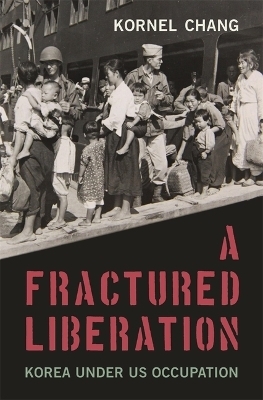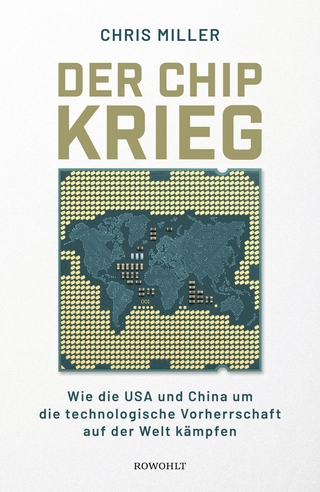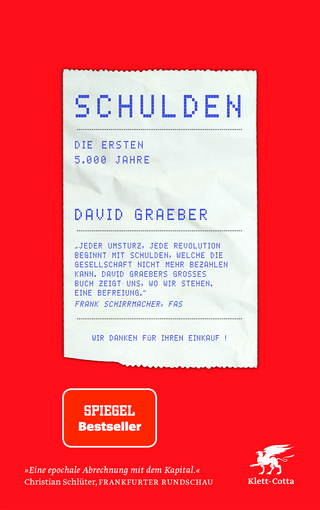
A Fractured Liberation
Korea under US Occupation
Seiten
2025
The Belknap Press (Verlag)
978-0-674-25843-3 (ISBN)
The Belknap Press (Verlag)
978-0-674-25843-3 (ISBN)
- Noch nicht erschienen (ca. März 2025)
- Versandkostenfrei innerhalb Deutschlands
- Auch auf Rechnung
- Verfügbarkeit in der Filiale vor Ort prüfen
- Artikel merken
After liberation in 1945, Koreans erupted with hopes for reform that had been bottled up during forty years of Japanese imperial rule. Arguing that permanent North-South division was far from inevitable, Kornel Chang explores the movement for a unified Korean social democracy and its suppression by anticommunist US military authorities.
A poignant return to Korea’s forgotten “Asian Spring”—a moment ripe with possibility denied by the postwar US military occupation.
When Japanese imperial rule ended in August 1945, the Korean peninsula erupted with hopes that had been bottled up for forty years. New mother Chŏn Sukhŭi marveled at the news, envisioning her son growing up free in an independent Korea. Yi Ilchae, who only days before had been drafted into the Japanese army, threw himself into union activism. An electrifying excitement jolted Koreans into action everywhere. Peasants occupied Japanese-owned farmlands, workers seized control of factories, and women demanded political and economic equality.
A Fractured Liberation brings to vivid life the brief but intense moment in postwar Korea when anything seemed possible, but nothing was guaranteed. The country had been abruptly split into US and Soviet military occupation zones, but, as Kornel Chang shows, ordinary people threw themselves into achieving self-governance throughout a unified Korea. The mostly left-leaning efforts were bolstered by an eclectic group of American supporters, including New Deal liberals, Christian socialists, and trade unionists.
The Koreans’ greatest obstacle, however, proved to be the US military government in the south and its rigidly anti-communist leadership. Despite promising liberation from the hated Japanese-imposed institutions, the US occupation government under General John R. Hodge hired back Koreans who had worked for the Japanese to do the dirty work of curbing protests and muzzling reformers. As concern over the budding superpower rivalry with the Soviet Union overshadowed the Koreans’ democratic aspirations, the United States increasingly narrowed the possibilities for Korean independence, helping to cement the North-South divide and ensure decades of authoritarian rule on both sides.
A poignant return to Korea’s forgotten “Asian Spring”—a moment ripe with possibility denied by the postwar US military occupation.
When Japanese imperial rule ended in August 1945, the Korean peninsula erupted with hopes that had been bottled up for forty years. New mother Chŏn Sukhŭi marveled at the news, envisioning her son growing up free in an independent Korea. Yi Ilchae, who only days before had been drafted into the Japanese army, threw himself into union activism. An electrifying excitement jolted Koreans into action everywhere. Peasants occupied Japanese-owned farmlands, workers seized control of factories, and women demanded political and economic equality.
A Fractured Liberation brings to vivid life the brief but intense moment in postwar Korea when anything seemed possible, but nothing was guaranteed. The country had been abruptly split into US and Soviet military occupation zones, but, as Kornel Chang shows, ordinary people threw themselves into achieving self-governance throughout a unified Korea. The mostly left-leaning efforts were bolstered by an eclectic group of American supporters, including New Deal liberals, Christian socialists, and trade unionists.
The Koreans’ greatest obstacle, however, proved to be the US military government in the south and its rigidly anti-communist leadership. Despite promising liberation from the hated Japanese-imposed institutions, the US occupation government under General John R. Hodge hired back Koreans who had worked for the Japanese to do the dirty work of curbing protests and muzzling reformers. As concern over the budding superpower rivalry with the Soviet Union overshadowed the Koreans’ democratic aspirations, the United States increasingly narrowed the possibilities for Korean independence, helping to cement the North-South divide and ensure decades of authoritarian rule on both sides.
Kornel Chang is the author of Pacific Connections: The Making of the U.S.-Canadian Borderlands, winner of the Association for Asian American Studies Book Prize in History. He is Associate Professor of History and American Studies and Chair of the History Department at Rutgers University–Newark.
| Erscheint lt. Verlag | 4.3.2025 |
|---|---|
| Zusatzinfo | 3 Maps |
| Verlagsort | Cambridge, Mass. |
| Sprache | englisch |
| Maße | 156 x 235 mm |
| Gewicht | 640 g |
| Themenwelt | Geisteswissenschaften ► Geschichte ► Regional- / Ländergeschichte |
| Geschichte ► Teilgebiete der Geschichte ► Wirtschaftsgeschichte | |
| Sozialwissenschaften ► Politik / Verwaltung ► Politische Systeme | |
| ISBN-10 | 0-674-25843-6 / 0674258436 |
| ISBN-13 | 978-0-674-25843-3 / 9780674258433 |
| Zustand | Neuware |
| Informationen gemäß Produktsicherheitsverordnung (GPSR) | |
| Haben Sie eine Frage zum Produkt? |
Mehr entdecken
aus dem Bereich
aus dem Bereich
Macht und Herrschaft im Zarenreich
Buch | Hardcover (2024)
C.H.Beck (Verlag)
49,90 €
wie die USA und China um die technologische Vorherrschaft auf der …
Buch | Hardcover (2023)
Rowohlt (Verlag)
30,00 €


